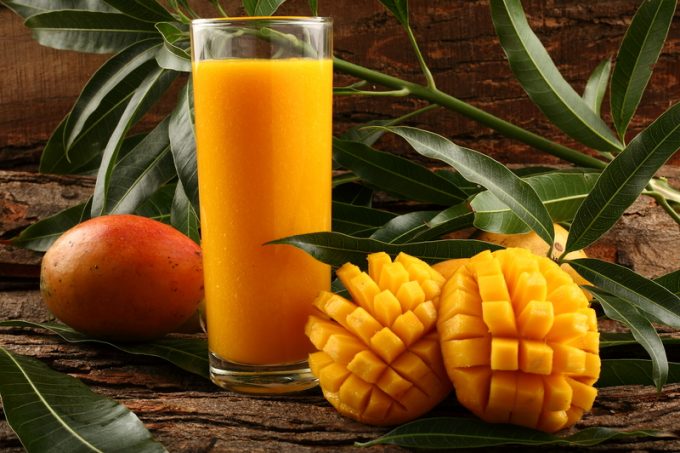Agents not compliant with dangerous goods training rules will be struck-off, warns IATA
Forwarder associations are warning members that they must upload their dangerous goods certificates immediately, or ...
TFII: SOLID AS USUALMAERSK: WEAKENINGF: FALLING OFF A CLIFFAAPL: 'BOTTLENECK IN MAINLAND CHINA'AAPL: CHINA TRENDSDHL: GROWTH CAPEXR: ANOTHER SOLID DELIVERYMFT: HERE COMES THE FALLDSV: LOOK AT SCHENKER PERFORMANCEUPS: A WAVE OF DOWNGRADES DSV: BARGAIN BINKNX: EARNINGS OUTODFL: RISING AND FALLING AND THEN RISING
TFII: SOLID AS USUALMAERSK: WEAKENINGF: FALLING OFF A CLIFFAAPL: 'BOTTLENECK IN MAINLAND CHINA'AAPL: CHINA TRENDSDHL: GROWTH CAPEXR: ANOTHER SOLID DELIVERYMFT: HERE COMES THE FALLDSV: LOOK AT SCHENKER PERFORMANCEUPS: A WAVE OF DOWNGRADES DSV: BARGAIN BINKNX: EARNINGS OUTODFL: RISING AND FALLING AND THEN RISING

As Indian mango growers rejoice at the prospect of increased export demand, supply chain stakeholders are looking to maximise the potential for growth.
Their upbeat tone stems from improved air freight capacity and a sharp fall in freight rates from the stratospheric highs of a year ago’s Covid-induced trade turmoil.
According to Dax Theknath, executive director at Mumbai-based freight forwarder Jet Freight Logistics, airlines operating out of India have scaled up capacity to meet the seasonal fruit shipment demand – particularly for mangoes.
“With more flights and freighters available, there is no capacity issue for airlines,” he told The Loadstar. “They are well equipped to handle mango shipments and ensure their timely and safe delivery to destinations worldwide.”
He said Indian mango shippers were hoping to grow volumes into high-value markets, especially the US, after opening additional food-irradiation facilities to meet the quality criteria of some countries. Indian mango shipments to the US were halted in 2020 and 2021 in the absence of quality-related inspections by US Department of Agriculture officials, due to pandemic travel restrictions.
And, he added: “The rates for air transport of goods have decreased significantly compared with last year, making it more economically feasible for customers to export.”
While the bulk of India-grown mangoes – locally regarded as “the king of all fruits” – traditionally go to markets in Europe and the Gulf, exporters and traders have recently extended their reach into some untapped destinations, notably Japan.
“This year’s crop has been particularly fruitful, and with the combination of increased volume and lower transport costs, this year’s mango export season is looking quite promising,” said Mr Theknath.
According to him, Frankfurt has emerged a major hub for Indian mango shipments, post-Brexit, which, he said “indicates a shift in the export routes for Indian mangoes, as producers explore new destinations and shipping routes”.
However, India’s perishables trade via ocean connections is facing challenges. Container terminals at Nhava Sheva (JNPT) have temporarily suspended temperature-controlled cargo movements because of severe reefer plug shortages, industry sources told The Loadstar.
In addition, PSA Mumbai at the port is set to implement a 7.5% hike in service rates from 1 April, making ship calls costlier for carriers and bringing a predictable additional burden for exporters/importers.
The carriers serving Indian trades have already been voicing concerns over high terminal charges, because of regulated tariff systems at government-owned major gateways.
You can reach the writer at [email protected].
Comment on this article
Scott Dunn
March 30, 2023 at 11:38 amIt’s great to hear that Indian mango exports are looking promising as transport costs begin to decrease. Mangoes are a beloved fruit around the world, and India is renowned for producing some of the best mangoes in the world. The reduction in transport costs will undoubtedly make it easier for Indian farmers and exporters to get their mangoes to international markets, allowing more people to enjoy this delicious fruit.
Not only will this benefit Indian farmers and exporters, but it will also boost the Indian economy as a whole. Mango exports are a significant contributor to India’s economy, and with the reduction in transport costs, it is likely that we will see an increase in exports and a subsequent boost in economic growth.
However, it is important to note that the pandemic has caused significant disruptions to global trade, and while transport costs may be decreasing, other challenges may arise. It will be crucial to continue to monitor the situation and support Indian farmers and exporters to ensure the continued success of the Indian mango industry.